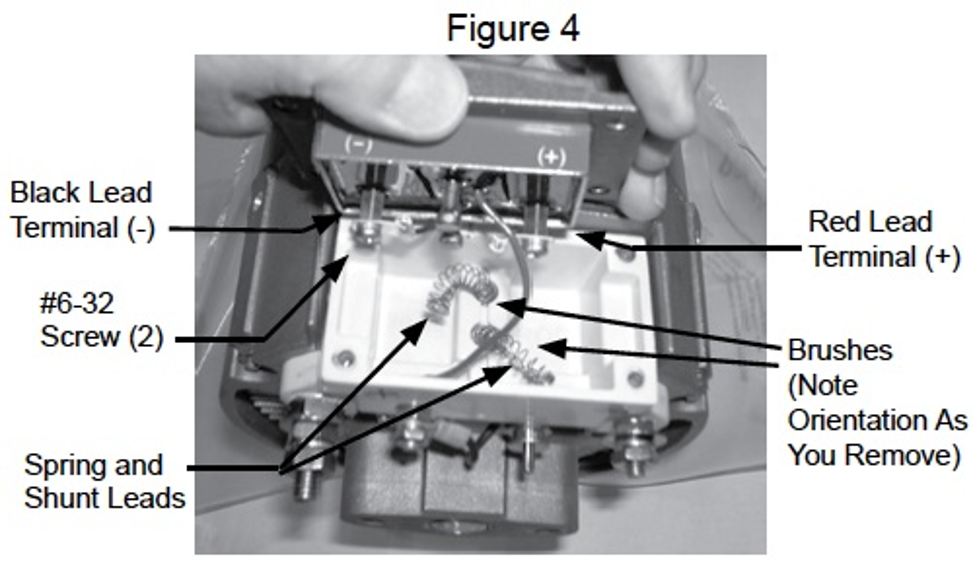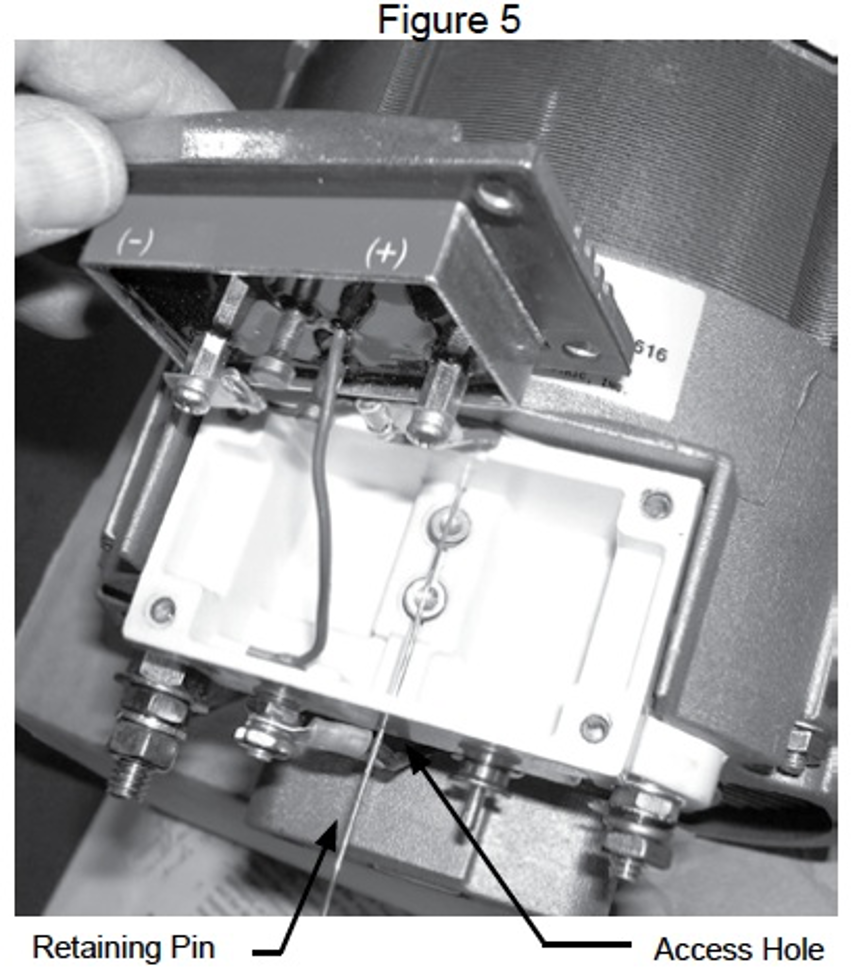by Leese Neville
Regulator Removal
These instructions cover the removal and installation of the 102200 voltage regulator which is used on the 12-volt “JB” and “LC” alternators.
The 102200 regulator has an excite circuit that is used on 12-volt alternators with AC excite, ignition excite, or with a diode trio, depending on the original configuration of the alternator.
1. Disconnect battery ground cable.
2. Remove and discard four Mounting Screws from the regulator cover.
3. Remove and retain the two #10-32 nuts from the Excitation Terminal on the Regulator Holder. See Figure 1.

If the regulator holder has Remote Sense Terminal, do not remove these nuts. See Figure 2.

4. Slowly tilt the regulator up and remove and retain the Excitation #10-32 square head screw to disconnect the regulator blue lead (maybe white with a blue tracer). Note the orientation of the Regulator Blue wire terminal inside the regulator holder so it can be reinstalled in the same manner. See Figure 3.

Disconnect the red and black leads to the regulator terminals by removing and discarding the two (2) #6-32 screws holding the leads to the terminals. See Figure 4.

Remove the brushes, noting their orientation so that they can be reinstalled in the same way they were removed. Reinstalling the brushes in the same orientation will match the alternator slip ring wear on the ends of the brushes. Visually inspect the brushes. If the brushes appear burned, cracked, damaged, or less than 3/8 inches long the brushes must be replaced. Inspect the springs and the shunt lead within the spring for damage. Replace if necessary.
7. Inspect the Red and Black leads that were disconnected from the regulator. If insulation is damaged so bare wire is visible, then the alternator should be disassembled and the leads replaced.
Regulator Installation
1. If the brushes are to be reused, clean both brushes with a spray electrical contact cleaner of the type that does not contain silicone. Silicone attacks the brushes and will cause short brush life. Clean brush contact caps with #600 grade (or finer) sandpaper.

2. Insert a brush in each of the two brush openings in the original orientation noted in step 6 above. Compress the springs and retain them with a pin inserted through the Access Hole in the Regulator Holder. A suitable pin can be made of a 1/16” drill or brazing wire. See Figure 5.
Orient the regulator with respect to the alternator as shown in Figure 1 using the regulator label as a reference.
4. Attach Red wire to (+) regulator terminal and Black wire to the (-) regulator terminal using the two #6-32 screws supplied (see Figure 4). Torque to 10-12 LB-IN. Connect the regulator blue lead to the Regulator Holder using the exciting #10-32 square head screw and two #10-32 nuts, in the same manner, it was removed, (see Figure 3), Torque Nuts to 17-20 LB-IN.
5. Place regulator in Regulator Holder. Assure that the Black and Red leads are seated in the groves in the Regulator Holder. See Figure 6.

Apply a small amount of downward pressure on the regulator and REMOVE RETAINING PIN (see Figure 5) from Access Hole to release the brush springs. Hold down the regulator and secure it with four (4) #8-32 screws supplied. Torque to 11-13 LB-IN.
CAUTION: The pin used to retain the brushes during the regulator assembly MUST BE REMOVED before the regulator is secured to avoid regulator damage. WARRANTY IS VOID ON ANY REGULATOR RETURNED WITH ‘PIN’ DAMAGE!!
Reconnect the ground cable to the battery.
Regulator Test
1. “Flash” field as follows: With the engine, off, connect a short jumper to the alternator NEGATIVE output terminal and to a piece of stiff wire or 1/16” drill. Insert the drill in the access hole as far as it will go for 1 to 2 seconds. This will restore the residual magnetism in the rotor.
2. Connect an accurate voltage meter across the alternator terminals and run the engine at 1000 to 1200 RPM. The voltage shall be between 14.0 and 14.4 volts.
Important: The information contained in this bulletin is intended for use by trained, professional technicians who have the proper tools, equipment, and training to perform the required maintenance described above. This information is NOT intended for ‘do-ityourselfers’, and you should not assume that this information applies to your equipment.
If you have any questions regarding this information please visit our website at www.prestolite.com, or contact our technical service department at (866) 288-9853 or [email protected]